Alex Murdaugh is seen wearing a clean white T-shirt on the night of the double murders in a new body cam image
>
Newly released footage from the Alex Murdaugh double murder trial shows the disgraced lawyer speaking to police on the night of the murders of his wife and son.
Murdaugh, who is accused of shooting his wife, Maggie, 52, and their youngest son, Paul, 22, on June 7, 2021, in their sprawling hunting lodge, appeared distraught as he spoke to officers while wearing a baggy white T-shirt and black shorts.
The white shirt also had no signs of blood from the brutal crime scene, echoing police testimony that Murdaugh was clean when cops arrived at the shelter.
This is despite first responders in court on Thursday describing in gruesome detail to jury how his wife and son had been found ‘in pools of blood’ after being shot in the head, with the ‘brain of his son at ankle height’.
Prosecutors allege Murdaugh carried out the killings to gain sympathy and distract attention from his damning financial crimes. It comes as lawyers in the case agreed on Thursday to release redacted versions of body camera footage sent to the court.
New police body camera footage shows Alex Murdaugh (right) in a clean white shirt on the night of his wife and son’s murder.
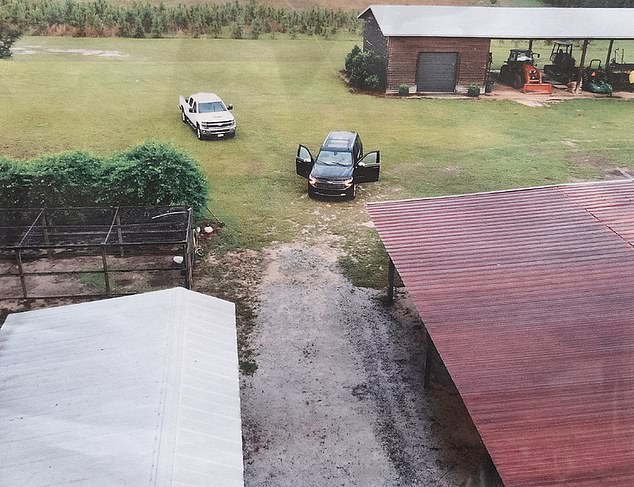
Other images show drone shots of the crime scene, including the buildings where the bloody bodies of Maggie and Paul Murdaugh were found. Maggie was found by the red-roofed building.
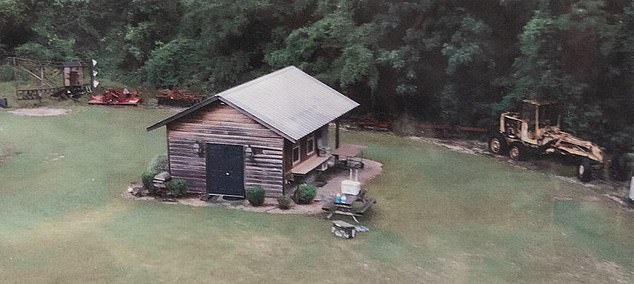
Pictured: The kennel where police found Paul’s body in a pool of blood
Along with the images of Murdaugh, the new images also show actual shots of the crime scene, including the buildings where the bodies of Maggie and Paul were found.
Full-body camera video was presented to the jury on Thursday, allowing them to see what happened when police arrived at the family’s home.
Video seen in the courtroom featured the gruesome discovery of the ‘butchered’ bodies of Maggie and Paul, prompting the jury to cover their mouths and Murdaugh to collapse in court.
Colleton County Sheriff’s Department Sgt. Daniel Greene, who was first on the scene, appears in the video questioning Murdaugh.
Greene had previously stated that when he arrived he was able to see Murdaugh at the end of the driveway. He had sped off in his squad car after Murdaugh called 911.
‘As I approached [Murdaugh] I could see the man lying on the ground to my left and the female victim to my right.
“There was a lot of blood pooling around her body, same for the female victim, also a lot of blood pooling around the body.”
Greene added that there was “a large amount of blood, as well as brain matter.”

Alex Murdaugh cries as the Colleton County Sheriff’s Department Sergeant describes the murder of his wife and son. green daniel
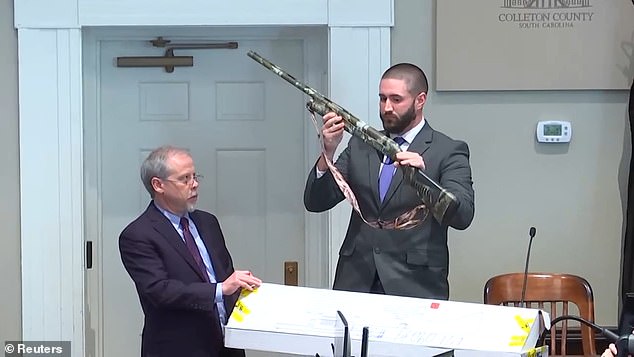
The prosecution’s first witness, Sgt. Daniel Greene shows the shotgun that he found Murdaugh holding in the scene that he brought to his car when Murdaugh seemed “upset and anxious.”
The policeman said there was also what appeared to be a large volume of water around the bodies, even though it was not raining when he arrived.
Fire Chief Barry McRoy told the court that when he arrived, Paul’s “brains were up to ankle height” and that he did not check on either victim because “they both had injuries that were incompatible with life.”
Greene added that he secured the shotgun, a 12-gauge Benelli Super Black Eagle, that Murdaugh was holding, taking it to his vehicle. He noted that shotgun shells were strewn across the driveway.
The weapon was later turned over to investigators, and Greene stated that he did not download or modify the weapon before turning it over.
He said he also noticed a number of tire tracks in the wet grass, more than the vehicles on the scene could explain. Murdaugh said he was only going on and off the property in a single vehicle.
Greene said he picked up Paul’s body as he continued to investigate the scene. Officers were working to rule out the possibility that Paul shot his mother before killing himself.
Greene added that he noticed there were rifle rounds, .300 blackout cartridges, surrounding Maggie’s body, but there didn’t appear to be many around Paul’s body.
In the footage, an officer can be heard commenting that there can’t be a gun under Paul’s body “unless it’s the shortest .300 Blackout ever made.”
The prosecution’s case is that Murdaugh shot his son first with a shotgun before shooting Maggie with the AR-15-style rifle. The rifle has never been found.
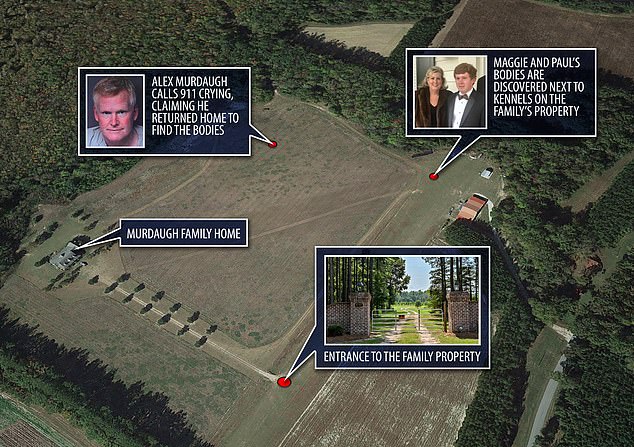
Murdaugh claimed that he had been visiting his elderly mother who suffers from Alzheimer’s and came home to find Maggie and Paul dead near the property’s kennels.
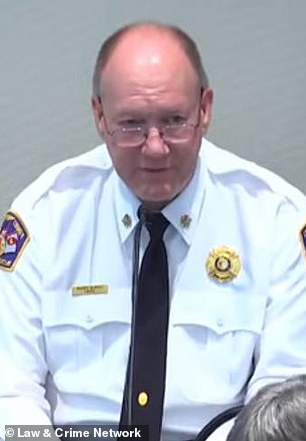
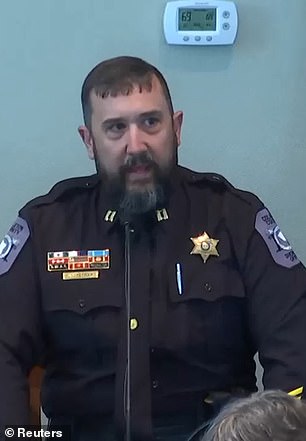
Fire Chief Barry McRoy (left) told jurors that when he arrived, Paul’s “brains were up to ankle height” and that he did not check on either victim because “they both had injuries that were incompatible with life.” . Police Officer Capt. Jason Chapman (right) said he found Paul lying on his stomach with his hands under his body and a smartphone resting on his back. His clothes were soaked in blood and water. Chapman said it was not clear where the water came from. it hadn’t rained yet
However, Murdaugh’s attorney, Dick Harpootlian, questioned McRoy about tire tracks that the fire marshal said he saw nearby.
McRoy said he mentioned the tracks to one of the officers, but they didn’t appear to be recorded even though other vehicles arrived.
Harpootlian also criticized Sgt. Daniel Greene for not taking pictures of tire tracks or footprints, and not putting anything on his feet to preserve the blood and brains splattered on the floor.
The defense theory is that someone else killed Murdaugh’s wife and child in revenge for a boating accident in which Paul was driving under the influence and killed a 19-year-old woman in February 2019.
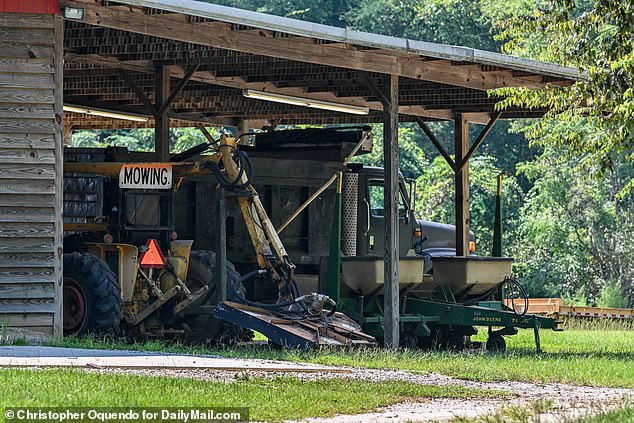
A shed near the kennels at the Moselle hunting lodge where Maggie and Paul Murdaugh were shot dead
Murdaugh claimed that he had been visiting his mother who suffers from Alzheimer’s and came home to find Maggie and Paul dead near the property’s kennels. But prosecutors say cellphone beeps will show Murdaugh was on the property when they were both killed.
In a gruesome 911 call, Murdaugh told the dispatcher between sobs: ‘I can tell [Paul’s] He was shot in the head and shot very badly… He has blood everywhere. I can see his brain.
He went on to describe how his wife was lying nearby, telling the dispatcher “she has a hole in her head.”
Murdaugh told the dispatcher that his son “has been being threatened for months and months and months.”
Greene, told the jury that he could see no blood on Murdaugh and although he seemed upset, he also saw no tears.
Murdaugh sounded clear-headed when questioned by the officer and is even heard casually greeting an officer arriving on scene, saying, ‘How are you?’
Greene, who said he saw multiple tire tracks inconsistent with the number of vehicles at the hunting lodge, admitted that he did not photograph the tracks or tracks at the scene. He said that he did not inform SLED (state law enforcement) about the evidence because “it was not part of my job description.”
